Adjusting your Car Seat
/0 Comments/in Bear’s Thoughts on Travel & Health, Science + Ergonomics/by oli_adminHow to Fit and Adjust your SkyDreamer Travel Pillow
/0 Comments/in Bear’s Thoughts on Travel & Health, Science + Ergonomics/by oli_adminResistance is Futile
/0 Comments/in Science + Ergonomics/by oli_admin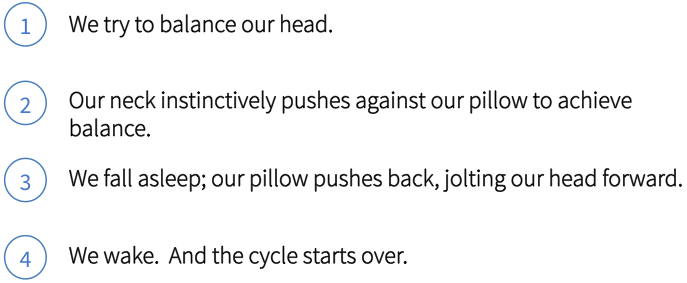
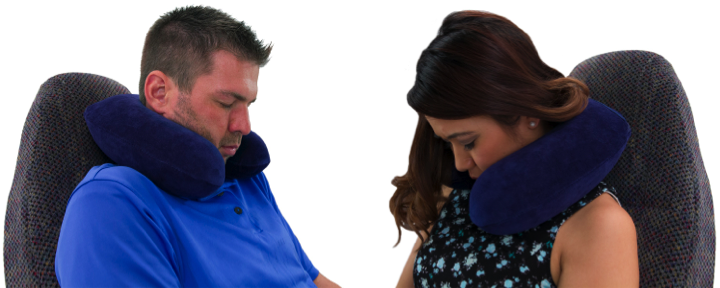
Head Droop is the New Travel Norm.
There has been a paradigm shift in how we sleep at 35,000 feet. The good news. There are more seats. The bad news. There’s less room to put down that vodka martini while navigating our ultra-slim modern day laptops. Perhaps worst, depending on one’s priorities, are the aching necks caused by our awkwardly slumped heads when sleeping in economy class.
This wasn’t always the case. Long ago, back during the Golden Age of Flight there was plenty of room to spread out. Our necks could relax because gravity only pulled our heads backwards and laterally thanks to the generous angles at which we slept.

Today, we are increasingly being forced to sleep in more upright angles because there’s now less room to recline. Naturally, when we sleep, our body tries to find a comfortable and balanced position in which to do so. Many of today’s traditional pillows are in direct conflict with this. This is because they force our neck and head away from our headrest and into uncomfortable positions, causing our head to slump forward. This makes it extremely difficult for our body to find and maintain a comfortable and balanced position. This struggle between our neck muscles and travel pillows is an ongoing battle that has the potential to cause long-term health problems.
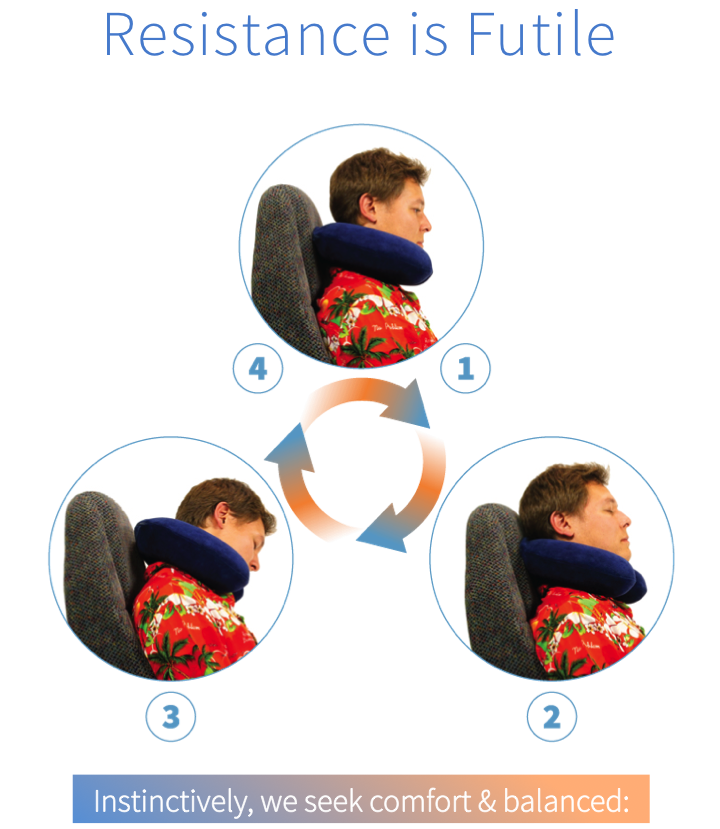

During this cycle, our cervical spine is constantly being pushed forward out of alignment and pulled back into alignment with our thoracic spine.
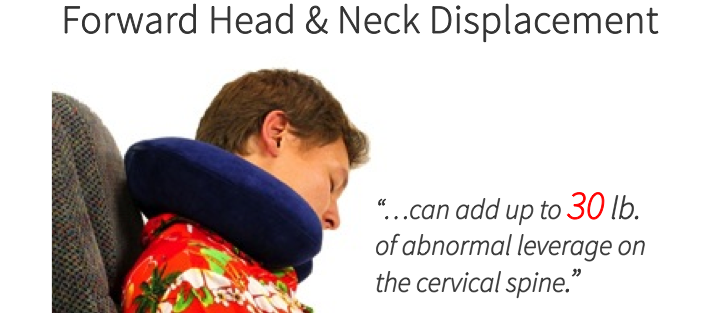
According to Rene Cailliet M.D, famous medical author and former director of the department of physical medicine and rehabilitation at the University of Southern California states:
Head in forward posture can add up to thirty pounds of abnormal leverage on the cervical spine. This can pull the entire spine out of alignment. Forward head posture (FHP) may result in the loss of 30% of vital lung capacity. These breath-related effects are primarily due to the loss of the cervical lordosis, which blocks the action of the hyoid muscles, especially the inferior hyoid responsible for helping lift the first rib during inhalation.
In simple language, the body shifts its rib cage in order to balance its forwardly displaced head. This shift can:
- Cause a decrease in lung capacity,
- Decrease blood to the brain,
- And cause fatigue.
Dr. Cailliet goes on to write that persistent forward head posture, also known as hyperkyphotic posture, puts compressive loads upon the upper thoracic vertebra, and is also associated with the development of Upper Thoracic Hump.
Inherently, many traditional travel pillows today actually increase the likelihood of forward head and neck displacement when sleeping in upright positions, making head droop and achy necks part of the travel experience. A travel pillow engineered for how we travel today is needed.
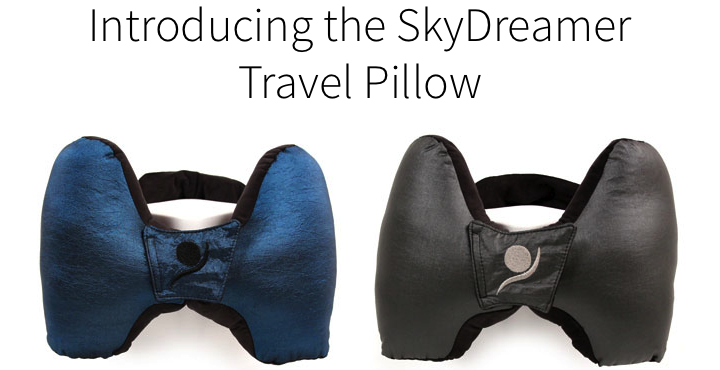
The SkyDreamer Travel Pillow was designed to eliminate sore necks and head droop from our travel experience. Optimized for spinal alignment and comfort, the Adjustable Slim Neckband does not displace the neck or head, allowing the cervical vertebra to remain in healthy alignment with the thoracic vertebra.
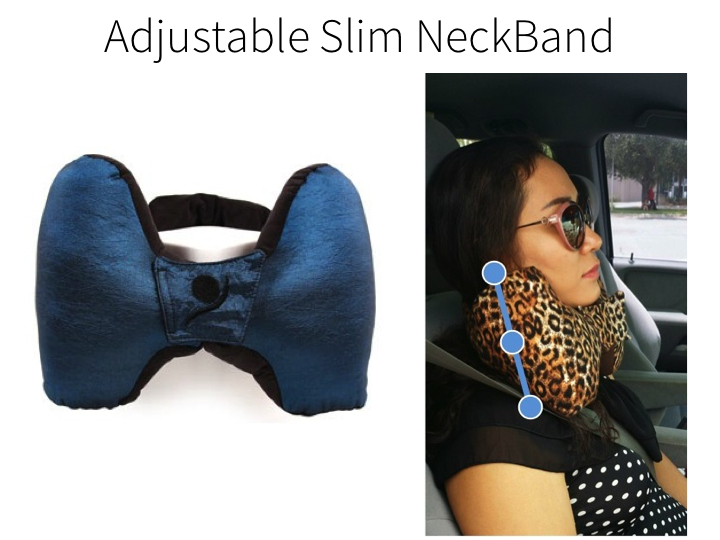

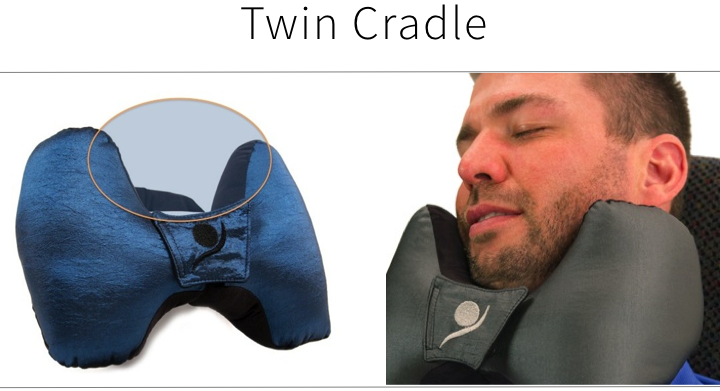
The Adjustable Slim Neckband works with the Twin Cradle to provide unprecedented support and alignment when sleeping in a near upright position, allowing our necks to finally rest while we sleep on the go!
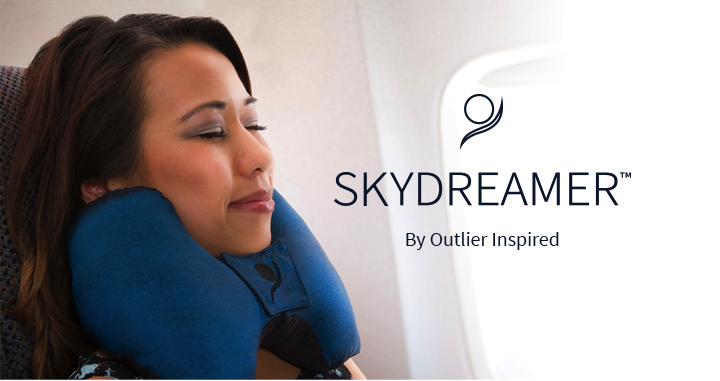
Engineered for how we travel today, the SkyDreamer Travel Pillow allows you to finally SkyDream at 35,000 feet!
Learn more about the revolutionary SkyDreamer Travel Pillow at www.outlierinspired.com. Also follow us on Facebook and Instagram for exciting new announcements and traveling tips.
Why the Horseshoe Pillow is Bad for how we Sleep Today
/0 Comments/in Bear’s Thoughts on Travel & Health, Science + Ergonomics/by oli_admin“Travel has evolved. Your travel pillow should evolve with it.”

There were many reasons why my mother told me to sit up straight and not slouch. It wasn’t just that it looked bad or was embarrassing when she and my dad had friends over for dinner, but it was also bad for my back and neck.
She would know. When I was 3 years old, my mom was in an automobile accident that left her with two compressed vertebrae. I walked away without a scratch. My mom had to endure a life of neck and back pain. Her suffering would have been worse had she not practiced good posture throughout her life. Shoulders back, head balanced over her shoulders when she sat. A firm mattress with a matching firm supportive pillow to maintain healthy alignment of her neck and back when she slept. Healthy spinal alignment was the key to managing her pain, and over time this would become a fundamental principle for how she wanted me to protect my health.
Today, many traditional travel pillows are odds with this principle. Burdened with thick neck padding, these pillows can unintentionally misalign our cervical spine. This was not intentional. Long ago, when we had more room to recline when sitting on a plane, the weight of our neck and head compressed this traditional padding into comfortable healthy support, allowing us to sleep soundly and with healthy spinal alignment – making it a reasonable design.

That period is long gone. Recent economic decisions made within the airline industry have lead to an increase in seats being added in economy class. With less room to recline, the use of these traditional pillows in today’s travel environment can not only make falling asleep and staying asleep more difficult, but can also cause spinal misalignment.

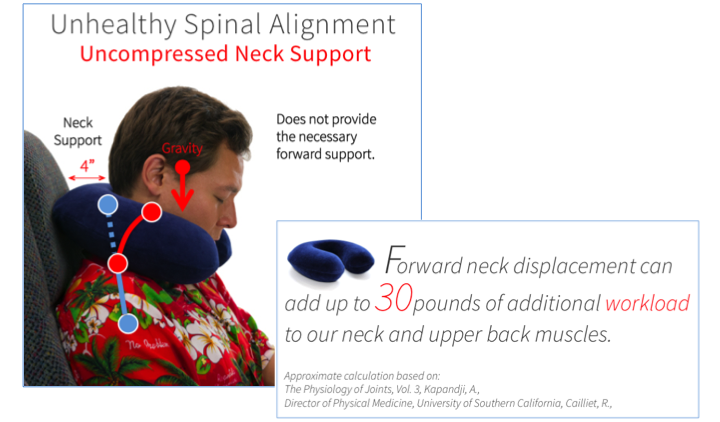
Once essential for providing comfort and healthy support, the neck padding found in many traditional travel pillows now bulges our neck outward away from our seats, causing forward head displacement. According to Dr. Adalbert Kapandji in the Physiology of Joints, Vol. 3, this forward displacement increases the amount of work our neck and upper back muscles must do in order to hold up our heads. This forces the suboccipital muscles responsible for raising the chin to remain in constant contraction, putting pressure on the three suboccipital nerves. Compression of these nerves can cause headaches at the base of the skull and mimic sinus (frontal) headaches.
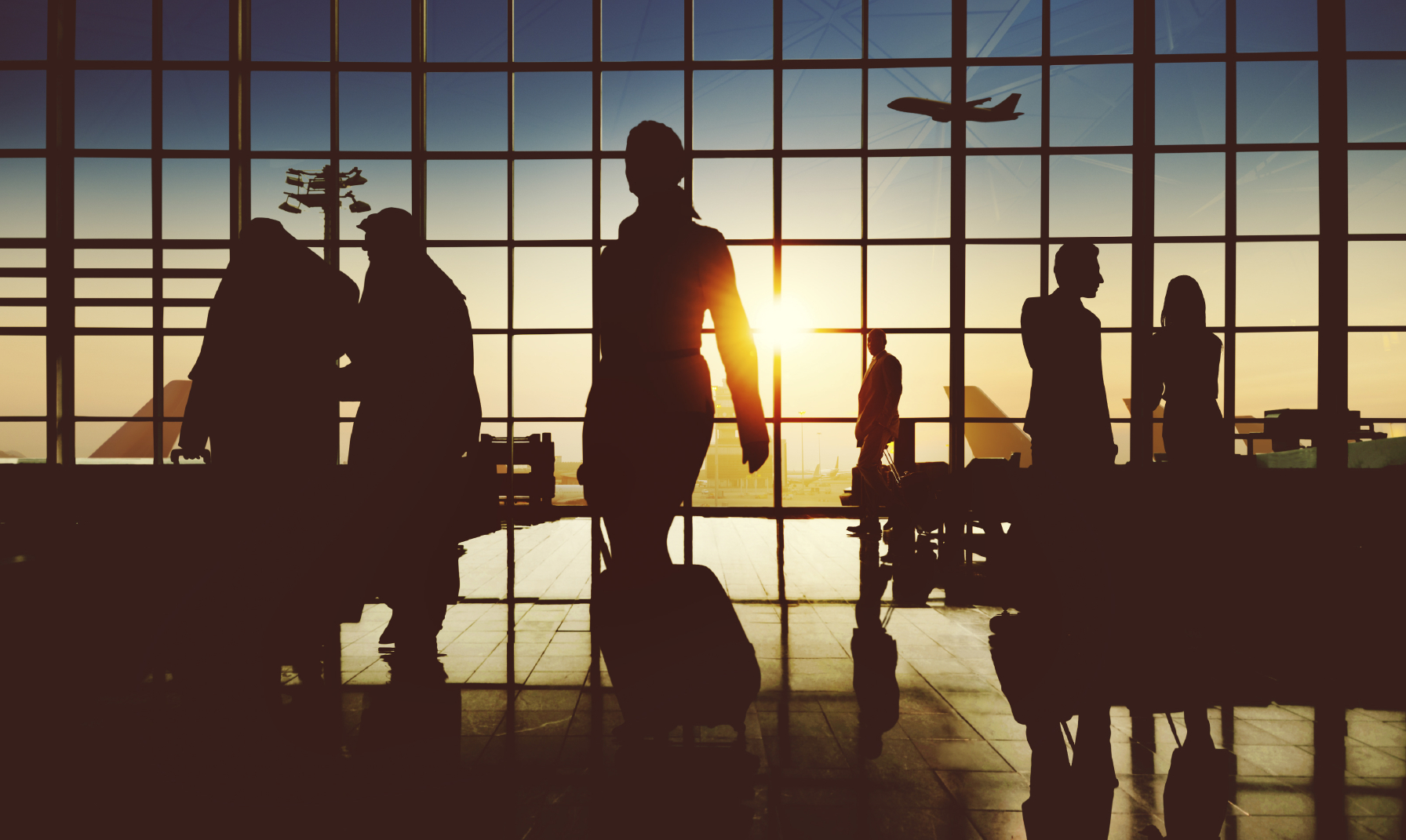
We are a society on the go. Advances in transportation have allowed us to more frequently transport ourselves to ever-greater distances from our homes and places of business. Many of us now rely on unconventional sleeping practices to get us through our day, making how we sleep while in transit, increasingly more important. A travel pillow solution that can both properly align the cervical spine and support the head without head slump is sorely needed – pun intended.

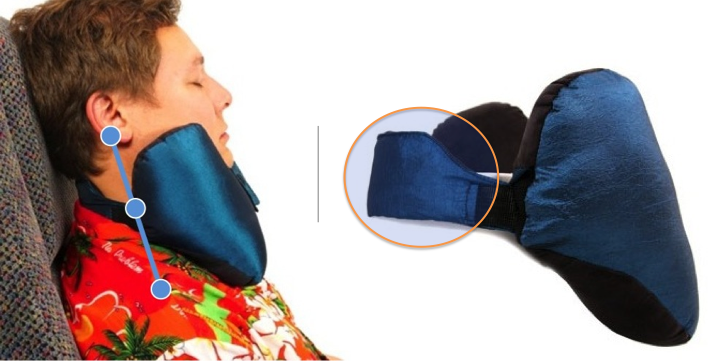
The SkyDreamer Travel Pillow was designed for how we travel today. Optimized for spinal alignment and comfort, its Adjustable Slim Neckband allows the cervical vertebra to lean back into healthy alignment with the thoracic vertebra.
We set out to design a travel pillow that would go Mano a Mano with gravity. Our aim was to create a modern travel pillow for our time – a creation that would be practical, convenient, and simple to use.
Sign up on our website and be one of the first to get the new SkyDreamer Travel Pillow when our Kickstarter campaign launches on January 4, 2016!
Learn more about the revolutionary SkyDreamer Travel Pillow at www.outlierinspired.com. Also follow us on Facebook and Instagram for exciting new announcements and traveling tips.
Head Droop has Become Synonymous with Flying Economy Class
/0 Comments/in Bear’s Thoughts on Travel & Health, Science + Ergonomics/by oli_adminHave you every inconspicuously fallen asleep in economy class only to wake feeling as if you’ve been on display? If so, it could be because today when we drift off, our heads sometimes go flying forward with such vigor that others can’t help but notice our spectacular neck breaking head flops!
With less room to recline, we find ourselves trying to sleep in seemingly more awkward positions – trying to find creative ways to balance our heads, and usually jamming up our necks in the process. Many of us wake feeling like we’ve had a ten-pound weight anchored to our head, while the rest of us may be a bit sluggish in the mental acuity department. It’s been suggested that sleeping in such awkward positions can over time cause spinal health issues.
Why is this now happening?
Recent economic decisions made within the airline industry have made forward head droop the new norm for many travelers who fly economy class. Today, when at rest, our heads are very much like a ball at rest atop an upside bowl.
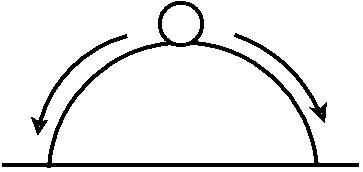
Any disturbance, regardless of how slight, could send this perilously balanced ball rolling over the edge without warning. This is also true for our marginally balanced heads when we try to sleep in near upright positions, making it virtually impossible to have a restful sleep.
So, what has changed?
This wasn’t always the case. During the Golden Age of Flight, we (perhaps, more accurately our parents and/or grandparents) slept in more sleep-friendly environments. Back then, gravity pulled our head back towards our headrest and into a stable position while we slept because there was more room to recline.
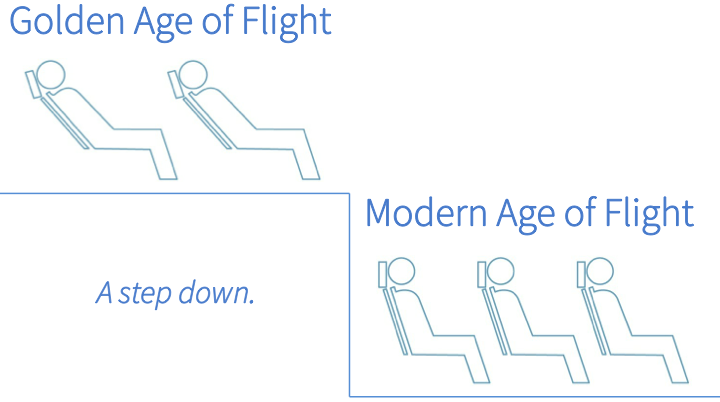
Today, this ability to comfortably lean back is being lost as more seats are being added in economy class. By sleeping in a more upright position, gravity now pulls our heads forward making the stability of our heads more sensitive – like the ball atop of the bowl – to shifts in body positions or other disturbances. This change in how we sleep has fundamentally shifted the anatomical relationship between our head and neck, requiring our necks to hold up and stabilize our heads.
The Science
When we sleep at a more reclined position, our head is pulled into a stable position. This is because the weight of our head or its center of gravity projects behind what is called the fulcrum – the point where the skull rotates atop of the cervical spine.
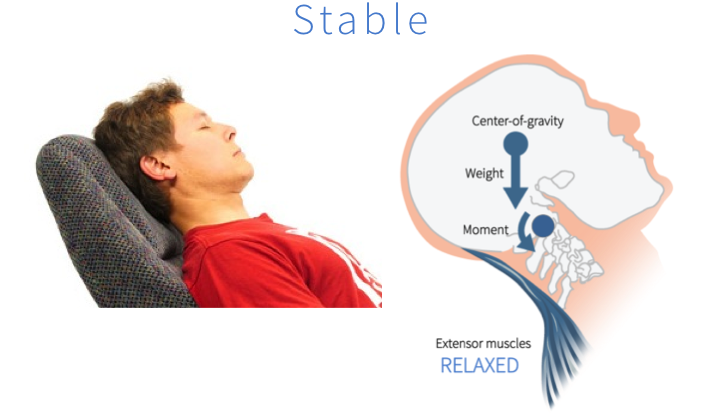
This stability allowed us to fall asleep and stay asleep because the muscles responsible for holding up our heads, called the extensor muscles, are being allowed to relax.
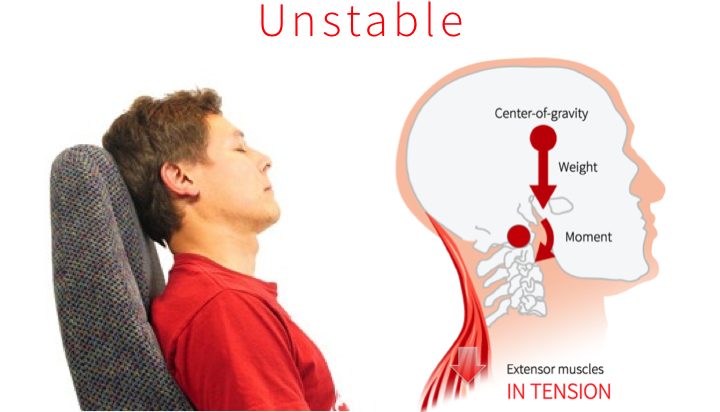
When we sleep at more upright angles, as we routinely do today, our head’s center of gravity projects forward of the fulcrum, making it unstable. This causes our head to become susceptible to forward rotation and misalignment of our cervical spine.
In order to prevent this, our neck extensor muscles must hold up our head against the pull of gravity while we sleep. This is impossible once asleep because our brain switches off the specialized cells responsible for moving our skeletal muscles called motor neurons, which unfortunately includes those extensor muscles in our neck.
The Solution
After our brain commands our extensor muscles to relax, gravity takes over causing our head to slump forward, resulting in our cervical spine becoming misaligned. The solution requires a stabilizing proxy that holds the head in an upright and aligned position while the neck extensor muscles are at rest.
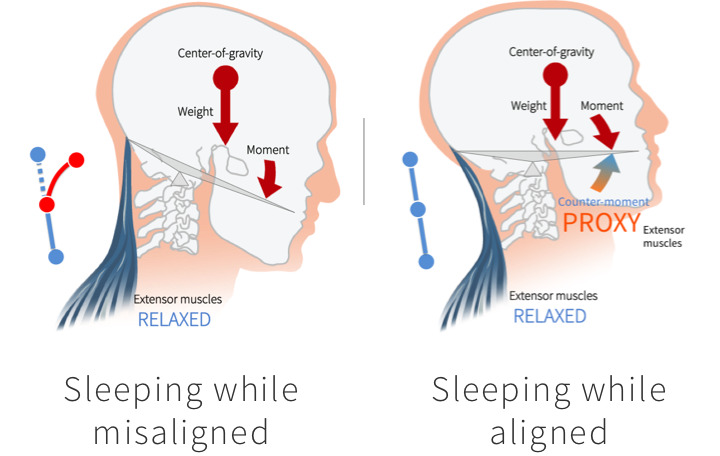
Our Solution
Guided by the science, we at Outlier Inspired have designed a travel pillow that does the work of the neck extensor muscles to stabilize the head and provide healthy spinal alignment while we make our way to our destinations.
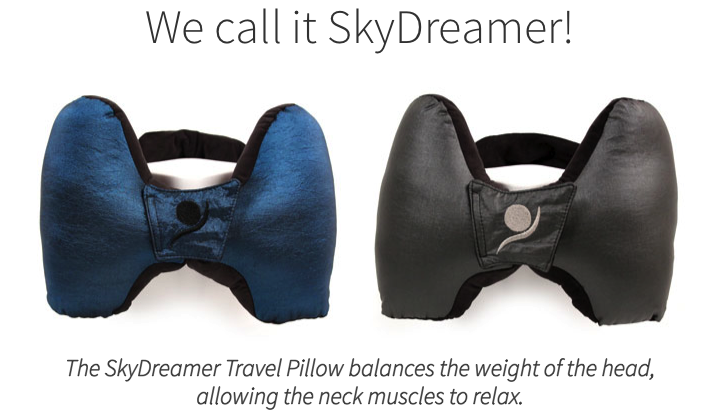

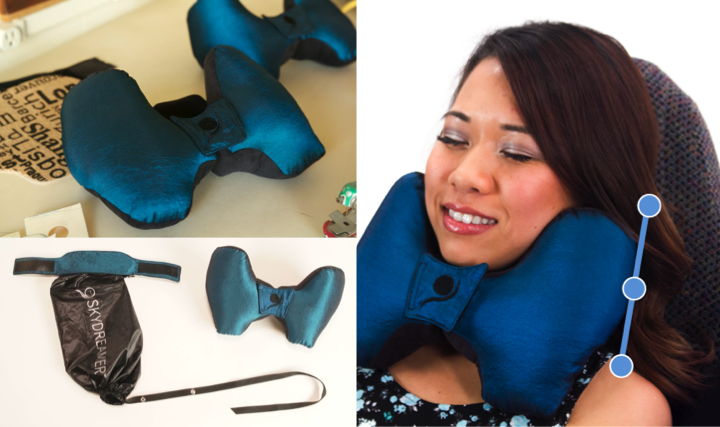
The SkyDreamer was designed to be practical, convenient, and simple to use. We threw out all conventional preconceptions and put in place a set of visionary design goals aimed at engineering a travel pillow for our time. The SkyDreamer once again makes “sleep” and “economy class” synonymous!
Learn more about the new SkyDreamer Travel Pillow at www.outlierinspired.com. Also follow us on Facebook and Instagram for exciting new announcements and traveling tips.
